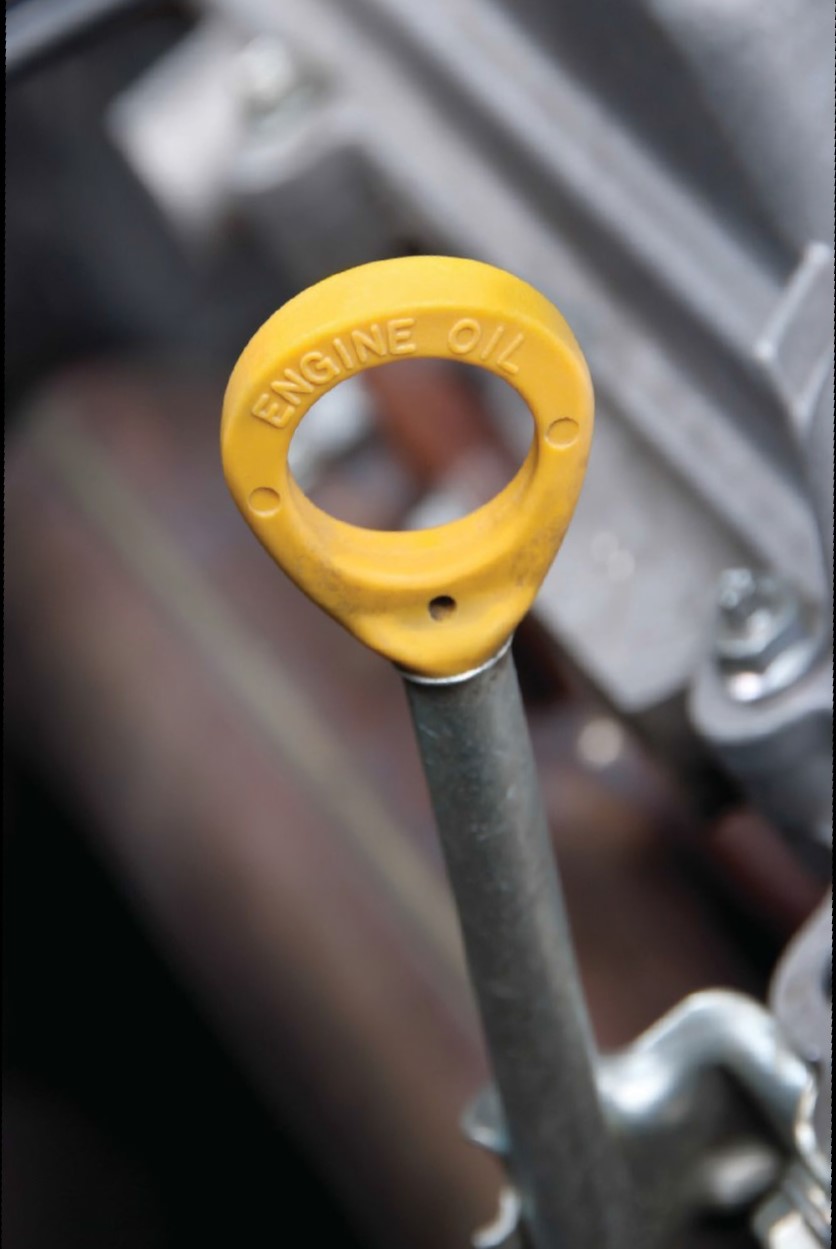What is the significance of Acid Number and Base Number in used engine oil analysis? Which is more important?
TLT Sounding Board October 2012

www.canstockphoto.com
Acid number represents the free acids that can corrode parts. Base number represents the amount of original acid-neutralizing additive remaining and, hence, the expected life of the oil. While both are important, more TLT readers came down in favor of base number or total base number as the more critical metric. Many felt the fuel type determined the more relevant number. When it came to using the two metrics to determine condemning limits, our readers offered many measurements, with OEM recommendations and the crossover point the two most frequently cited. However, several readers said neither numbers should be used to condemn used oil without incorporating more testing.
The more important is Base Number (BN). It neutralizes acid coming from combustion.
Total Base Number (TBN) or BN indicates the reserve ability of the oil to neutralize acidic engine contaminants
BN reflects the amount of original additive (for example, overbased detergent) remaining in the in-service oil. Once it is depleted (by neutralizing acids), then AN begins to appear. AN also shows presences of light acids (both volatile and non-volatile types) which can accelerate metal corrosion in bearings, piston rings, liners.
TBN is more important for reserve alkalinity.
An indicator of a degradation in the quality of the motor oil. Typical modern motor oils have TBNs of between 8 and 10.
Your BN affects the oil’s ability to neutral the acid so if AN is up and BN is down, you have an oil that is at the end of its life.
AN indicates free acids that can corrode parts. BN indicates free base that can also corrode parts. You must find a balance. They are equally important!
In conjunction, they indicate the oil’s degradation level. They each offer their own level of usefulness in UOA programs and can tell you different things.
BN is more important, although both can reveal useful information about the condition of the oil.
AN represents the most corrosive condition, while BN represents the amount of reserve left to protect the engine.
The significance of AN and BN in used engine oil analysis are important pieces to the puzzle when trying to optimize oil drain intervals and monitor overall engine performance. I would think in gasoline and diesel-fired engines, monitoring the TBN would be more important. For natural gas engines that require medium, low or no-ash type oils, monitoring TAN would be more critical.
BN because that’s indication of how much corrosion inhibitor is left.
They’re a measure of titratible acidic or alkaline substances in the oil with respect to the strong titrants used, i.e., they’re sometimes so very useful. TBN is probably more useful for a good quality engine oil in order to measure its neutralizing ability for acidic combustion byproducts.
I see AN as a measurement of the damage done versus BN as a measurement of the remaining protection. I prefer to measure BN for this reason.
AN is used to indicate excessive acidic components in the fluid. Commonly used to help determine useful oil life remaining in some industrial circulating oils. BN indicates the level of alkaline material remaining in the oil. Since acids are formed from fuels during the combustion process, BN for engine oils is used to help tell how much remaining life can be expected in the motor oil and is, therefore, more significant for engine oils.
I find we use BN more, but we only use it if we are looking to extend drain intervals or prove a point with an OEM. Otherwise we don’t use it. In the past six months, not a single sample has been tested for these numbers.
TAN and TBN give an indication of the useful life left in the oil. Both are important but on mobile equipment the TBN is the one to watch mostly.
Knowing the AN and BN is very important. Of the two, the AN is most important.
Depends on the fuel (AN for gasoline and BN for diesel).
We do non-traditional testing of oil additives, so we actually look at both. For the most part it used to be TAN for gas and TBN for diesel, but with changes in oil that is not always true now.
AN indicates the accumulated amount of oxidation and combustion byproducts in the oil. These acidic byproducts are corrosive to the metal in the engine. The BN indicates how much base is left inside the oil to neutralize the acids. When the basic additives are depleted (through neutralizing the acids), the acids will start to accumulate in the oil and cause engine corrosion. Both are equally important.
It gives an indication of contamination or additive depletion due to acidic contamination from combustion. I would say they are two sides of the same coin.
AN is the amount of potassium hydroxide (KOH) present and is used to measure the concentration of strong and weak acids in the sample. The BN is the measure of alkalinity to neutralize acids occurring in the oil. The more important of the two numbers is the BN, as it determines the life of the oil.
If TAN and TBN are plotted as a function of miles driven, the mile at which the two curves intersects provides a guidance to oil drain interval.
BN measures the engine oil’s ability to resist the formation of acidic byproducts. AN measures the presence of those acidic byproducts. Historically BN has been more important, but AN is beginning to gain value as all engines transition to Tier 4 regulations.
Base number, if done correctly, as it is a guide, along with other results, to the remaining additive in the engine oil.
Neither is very important anymore except when high-sulfur fuel is in play, in which case both could be considered important. More telling is oxidation (via FTIR or other established method), coupled with fuel soot (assuming “engine” is a metaphor for diesel engines).
The acids produced are relatively weak and are more of an indication of the condition of the oil and less of a problem to the engine components. In addition to being able to neutralize the acids produced due to moisture ingress and lube degradation, the reserve alkalinity is important, making the TBN of greater importance than the TAN.
 www.canstockphoto.com
How are the condemning limits for Acid Number and Base Number determined for used engine oil analysis?
www.canstockphoto.com
How are the condemning limits for Acid Number and Base Number determined for used engine oil analysis?
The OEM sets the condemning limits based on the type of oil (PCMO, HDDEO, marine) they recommend for their equipment.
For AN generally a value above the starting new fresh oil AN is used as a criteria for action. This will quantify the amount of acidic (weak and strong) compounds that have been added to the oil in operation. BN is generally trended downward, from a new starting value that corresponds to the amount of effective overbase detergent present in the oil. Also, trends can be important, because if the rate of depletion of the BN increases, this might be an early indication of changing parameter for the engine, including amount of blowby, combustion efficiency, fuel quality, operating changes and wear in the cylinders.
When they cross each other.
By the OEM. Once TBN/TAN numbers cross, the engine oil is severely degraded.
If the BN is below half of what it was as a new oil, its ability to continue to neutralize the acids is weakened.
Simple acid/base titration with color indicators. Or you can get all fancy and place a pH probe into the container if you don’t want to go by color alone.
Historical data.
These should be set by first testing the new virgin oil for a base starting point and to extrapolate the condemning limits for each specific application using this starting point for the new oil.
As the oil in the crankcase is used, acidic combustion byproducts form in the oil and the AN (TAN) increases. Much like an antacid for your stomach, the basic constituents in the new oil’s additive package are used up in an attempt to neutralize the acidic effects, the BN will decrease or become lower. TAN will start to increase rapidly when TBN has dropped to approximately half of its original new oil starting point.
I believe they are compared to the original values for new oil, and oil is condemned when the number indicates the additives have been depleted and corrosion likely.
By the experience and judgment of engine manufacturers, particularly with respect to corrosion of internal parts.
Engine manufacturer recommendations, oil vendor recommendations.
I look for the TAN to double from when it was new and that usually says that it is done.
Some are set by the lubricant supplier based on their data. Otherwise many people use a rule of thumb like double the new oil AN value or half the new oil BN value as condemning limits.
Even in the best case, condemning limits are somewhat subjective and arbitrary. In my opinion, they really need to be compared with the results of other tests such as oxidation, nitration and viscosity to get an accurate picture of the condition of the oil.
Most analysts have a cut-off point, either a fixed number or a percentage variation.
We give slight consideration to the acid-base crossover point. This is the point where the two are equal. Once the AN gets slightly higher than the base number, then it might be time to change the oil. Yet, we never make this the sole piece of data in the decision-making process.
The AN condemning limit should be set at some level above the base line of new oil. The BN should be set at some level less than base line for new oil.
There have been, in our laboratories, extremely few in-service engine oils condemned for TAN or TBN. We have, for example, determined caution limits by statistically reviewing over 100,000 in-service diesel engine oil samples and by using multiples of standard deviation values (2xSD for slightly elevated, 4xSD for elevated, 8xSD for high and >12xSD for critical caution values). For other types of fuel, e.g., LPG and gasoline, similar caution values have been determined statistically but with lower sample populations due to the very few samples supplied for analysis. For coal seam gas and landfill gas-fired diesel engines, the TAN typically starts at 1.5-2 mgKOH/g, and the value is monitored until it reaches the TBN value that typically starts at 6 mgKOH/g and this typically occurs at a TAN and TBN value of 4mgKOH/g.
TBN D4739. TAN D664.
Condemning limits should not be used in used-oil analysis of any type due to operation variables.
TBN in the 3.0-3.5 range. TAN in the 5.0-5.5 range.
There shouldn’t be a condemning limit for Acid Numbers. Used lubricants cannot be condemned on Acid or Base Numbers alone. More significant parameters such as wear metals, contaminants such as Si, Al, Na, K, viscosity, etc., should be used to evaluate the lubricant properties. Acid and BN analyses are secondary tests in both new and used-oil analysis.
Editor’s Note: Sounding Board is based on an e-mail survey of 13,000 TLT readers. Views expressed are those of the respondents and do not reflect the opinions of the Society of Tribologists and Lubrication Engineers. STLE does not vouch for the technical accuracy of opinions expressed in Sounding Board, nor does inclusion of a comment represent an endorsement of the technology by STLE.